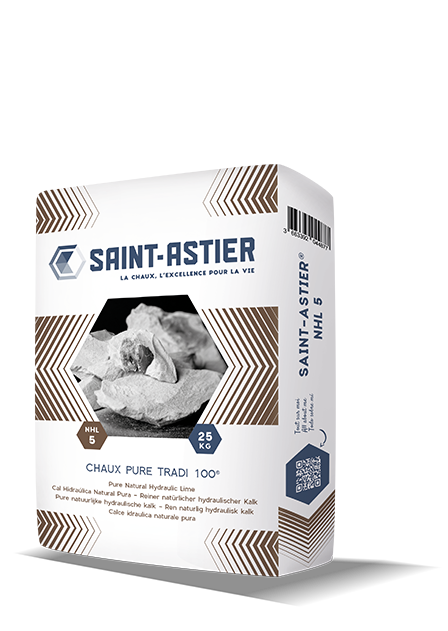In the general construction world, it’s common to hear the term “concrete” when talking about flooring: reinforced concrete, structural concrete, but lime concrete is widely used for renovating our old houses, floors of listed buildings, and increasingly in sustainable construction. This concrete is therefore called lime concrete, a solution for flooring (paving).
Lime concretes are an alternative to traditional concretes often composed of cement. They allow for the creation of interior ground floor paving in the renovation of old buildings (cellar floors, wine cellars, floors of Historical Monuments, old individual houses). Moreover, they are also perfectly suited for new constructions and eco-housing.
Creating a lime concrete floor is an essential foundation to stabilize the covering and allow hygrometric exchanges between the floor and walls in so-called old buildings. When the floor/wall/roof system is designed coherently, it’s a large part of future pathologies that are avoided many years later. So why deprive ourselves of it?
Offered in classic use (natural hydraulic lime + sand/gravel) or mixed with other aggregates such as clay beads, expanded shale, or pozzolana, these different solutions have different properties but thus offer more choices to the applicator. Discover below our different lime concrete solutions and the associated technical application advice for your work.


 All of SAINT-ASTIER®’s lime concrete offerings have an EXCELL GREEN ZONE label with the use of pure natural hydraulic lime TRADI 100® – NHL 5. This natural hydraulic lime, known and highly appreciated by its peers for over 110 years, is the most suitable lime for implementing lime concretes.
All of SAINT-ASTIER®’s lime concrete offerings have an EXCELL GREEN ZONE label with the use of pure natural hydraulic lime TRADI 100® – NHL 5. This natural hydraulic lime, known and highly appreciated by its peers for over 110 years, is the most suitable lime for implementing lime concretes.